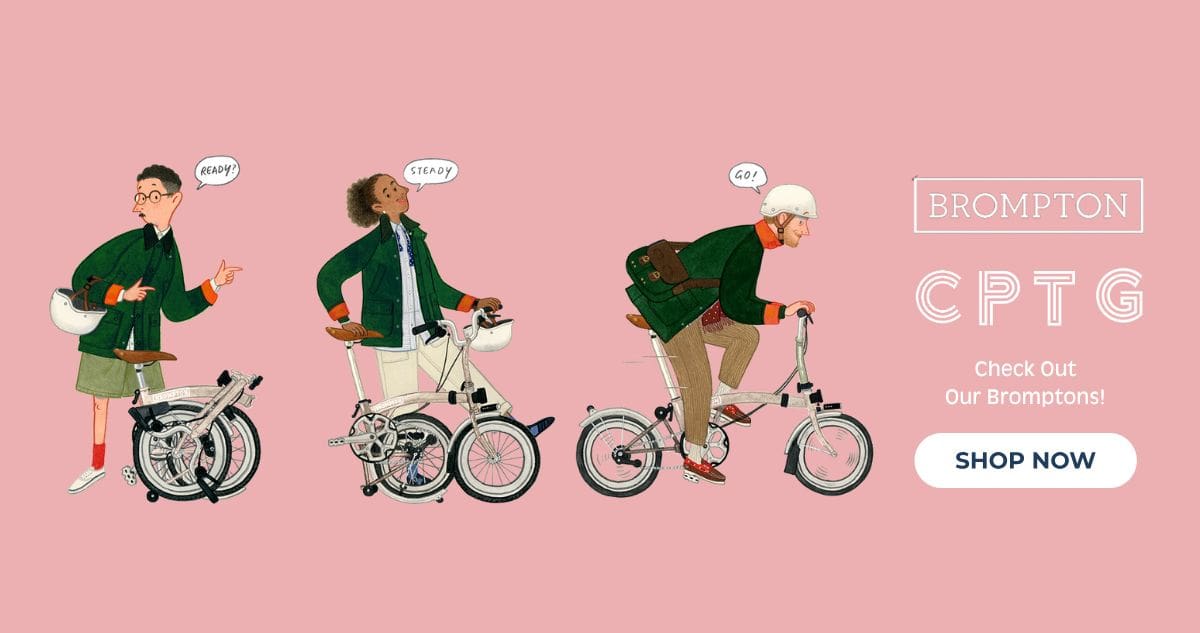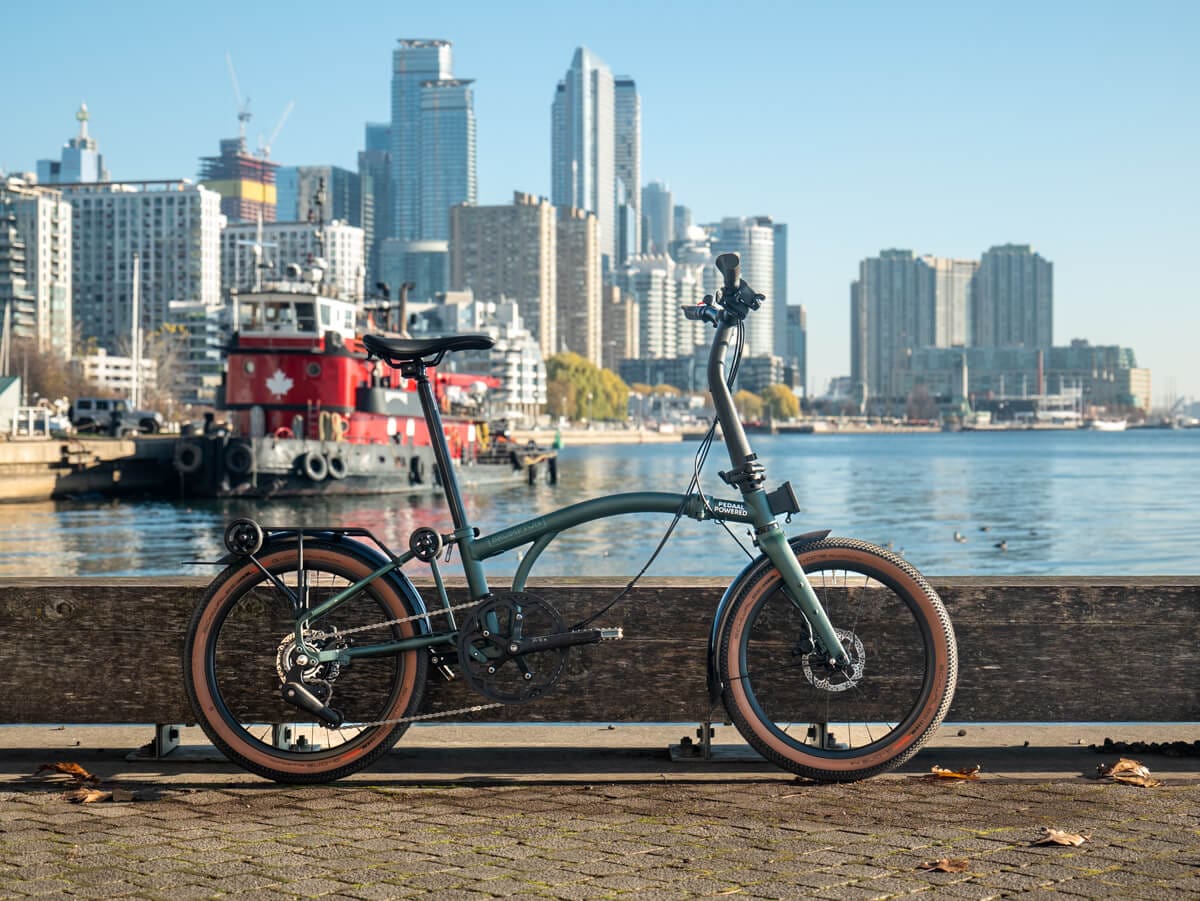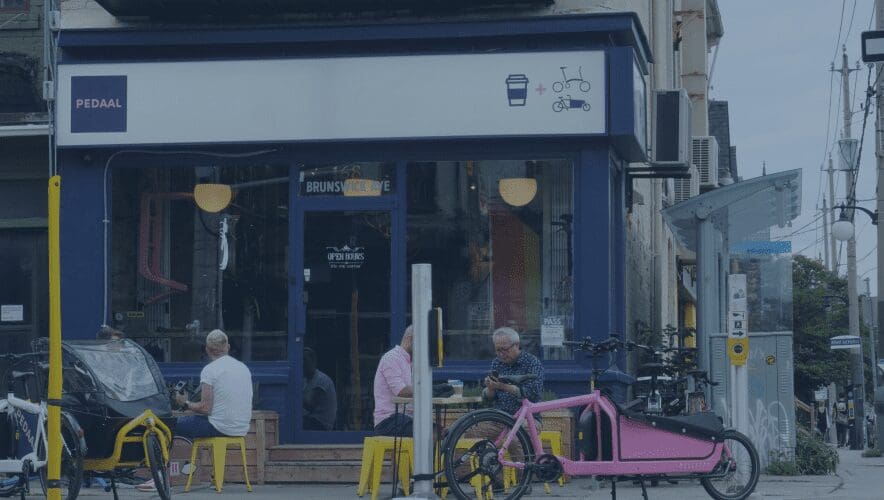What makes the best folding bike? Whether it’s a cycling vacation, a weekend adventure or daily commute, a folding bikes pleasure comes down to some frictionless mathematics. It’s all about how things measure up… literally! First, a folding bike must measure up small when folded. Second, it must measure really big when unfolded (we’ll explain why). And third, it must be engineered so that it folds and unfolds simply. Sound obvious? Well, no other brand than Brompton brands measure up to all three. Grab your measuring tape and let’s dig in!
Big On Ride Quality
If a folding bike is going to be ridden in a pothole-strewn city, then it has to be big on ride quality. But, good ride quality means the bike has to unfold big. What does big mean? A bikes bigness is its “wheelbase.” The wheelbase on a bike is the measurement from the front axle to the rear axle, and it represents the overall stability or footprint of the bike. If you’re buying a folding bike and the word “wheelbase” doesn’t come up, then something is very wrong.

Wheelbase is especially important when a bike has smaller wheels. Some people think small wheels are less efficient, but this isn’t true in the big city. With a bigger wheel, it takes more time to accelerate to top speed, and by the time hit top speed, you hit another stop light. A small wheel is pure acceleration, so you leap from one stoplight to the next. Plus, small wheels also manoeuvre much faster. But, all these natural assets of a small wheel disappear on a short wheelbase. A short wheelbase means the bike feels quite squirrelly and scary. But, not a Brompton. Nope. Brompton has a wheelbase bigger than most regular bikes!
Small on Portability
If you’re designing a folding bike, a large mathematical paradox pops up. Here it is: How can I design a bike that measures big unfolded yet measures small folded? Of course, the real question is: what is the point of folding up a bike if it can’t be carried? Like really… what’s the point?
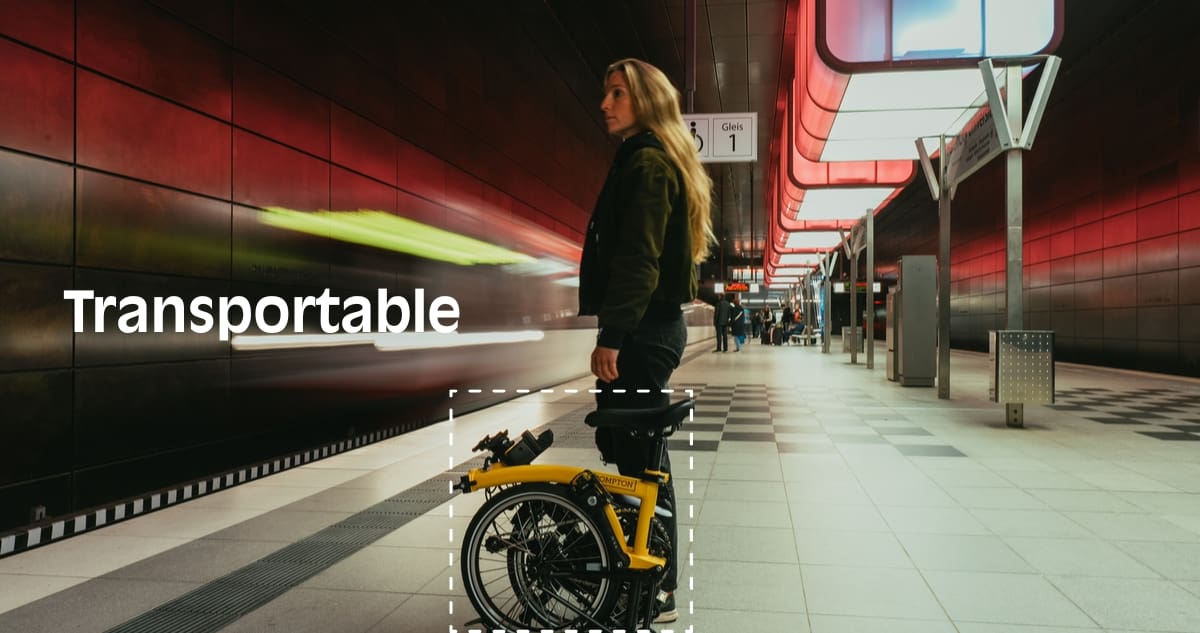
The use-case here has to do with indoors versus outdoors. When the bike is unfolded it is generally outside. And, when it is folded it is generally inside. It could be parked beside your desk, in a gallery coatcheck or in your closet at home, safe from thieves. Or, it’s moving around inside, like when you’re doing a grocery trip. Finally, it could be inside but the inside itself is moving – think of it being inside of a train, plane or automobile. If your folding bike is like carrying a big, heavy suitcase wherever you go indoors, then it’s a failure of design. Brompton’s fold to a mere 3.1 cubic feet. The closest competitor? Eight cubic feet!
Quick On The Physics
Thus far we have seen how a bike that folds big and unfolds small is a failure of design. But, even if you were to accomplish a big wheelbase and small fold, there is an entirely new issue! After all, all of this folding and unfolding has to be easy. It’s another engineering puzzle! Getting your hand stuck in overly complex folding mechanisms is no fun. This prompts the question: why buy a folding bike you’ll never fold?
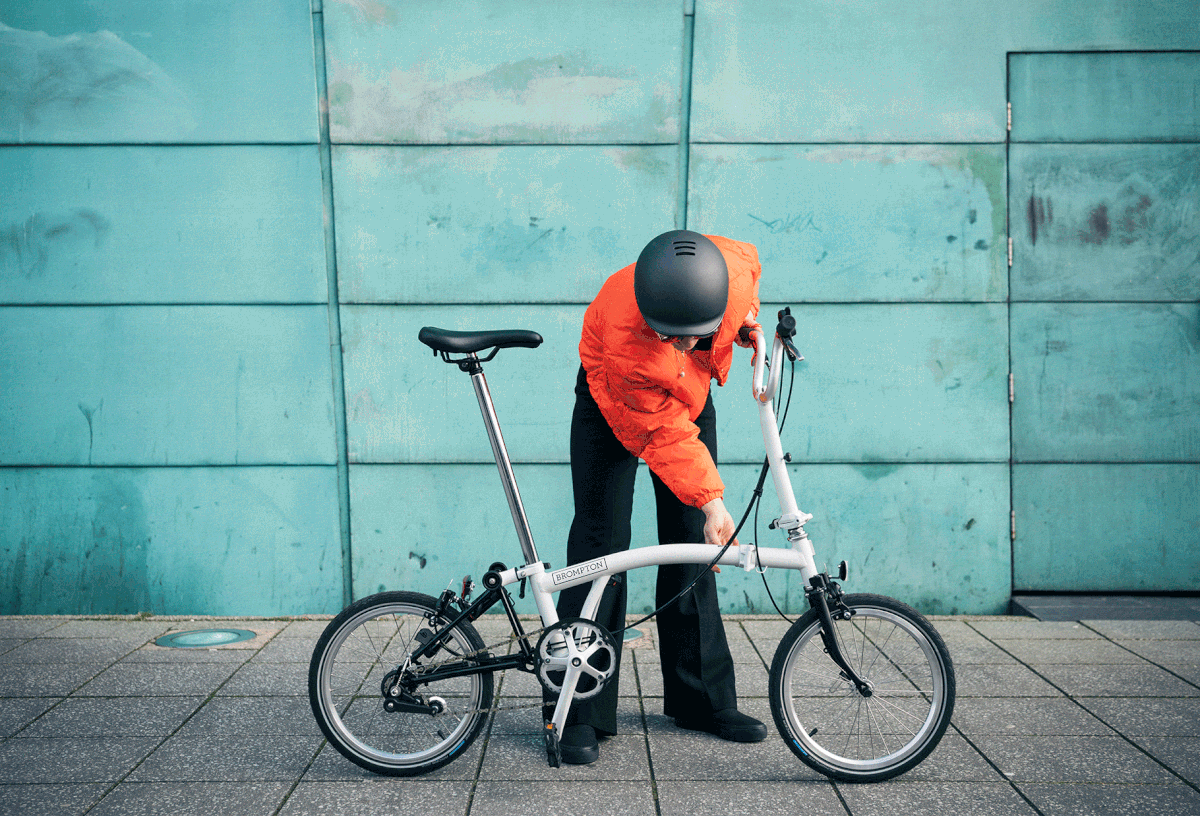
Foldability also comes down to math. It is all about engineering without over-engineering. Ultimately, it’s about creating incredibly tight tolerances that guarantee a snug and small fold. That means engineering parts that are meant for folding bikes, and quality control that ensures all straight lines are in fact straight. And, that takes a company-wide commitment to engineering standards that most companies don’t have the experience, knowledge or chutzpah to engineer. Luckily, Brompton’s are a cinch to fold and unfold. We can teach you in mere minutes!
In Comparison
Take wheelbase. A Trek FX hybrid measures 1045 mm. So does a 16″ Brompton. That means Brompton rides like a full-size bike, with small wheels that actually move quicker through city traffic – same stability, sharper performance. The new G-Line stretches even further at 1165 mm, giving unmatched stability on- or off-road.
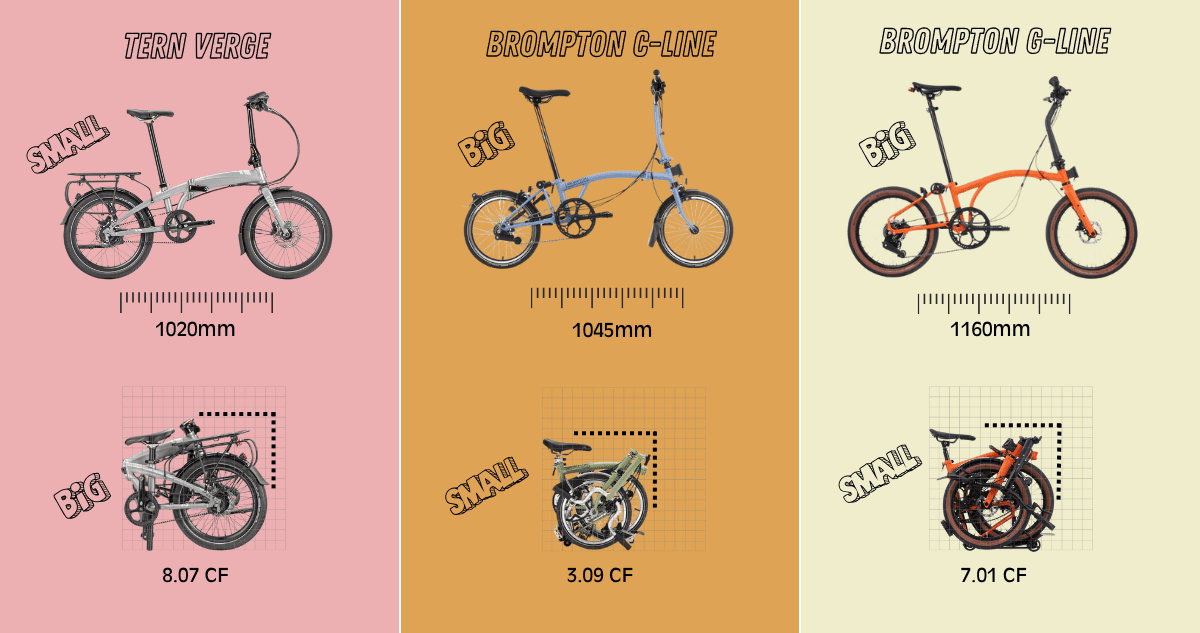
Now compare that to a Tern. With a short 1025 mm wheelbase, a Tern rides squirrelly, folds up into a bulky 8 cubic ft package, and is fiddly to boot. A bike that rides poorly and folds poorly makes little sense – unless you only want something cheap to pull out once a year.
Strange Company
How did Brompton solve the engineering paradox of an easy to fold bike that unfolds to a regular size bike while compressing to something the size of a backpack? The answer is engineering. And character. Lot’s of character. It takes a stubborn obsession to produce a bike like Brompton, but it also takes top-level engineering. And, a compulsion to keep improving. Brompton has all of this in spades.
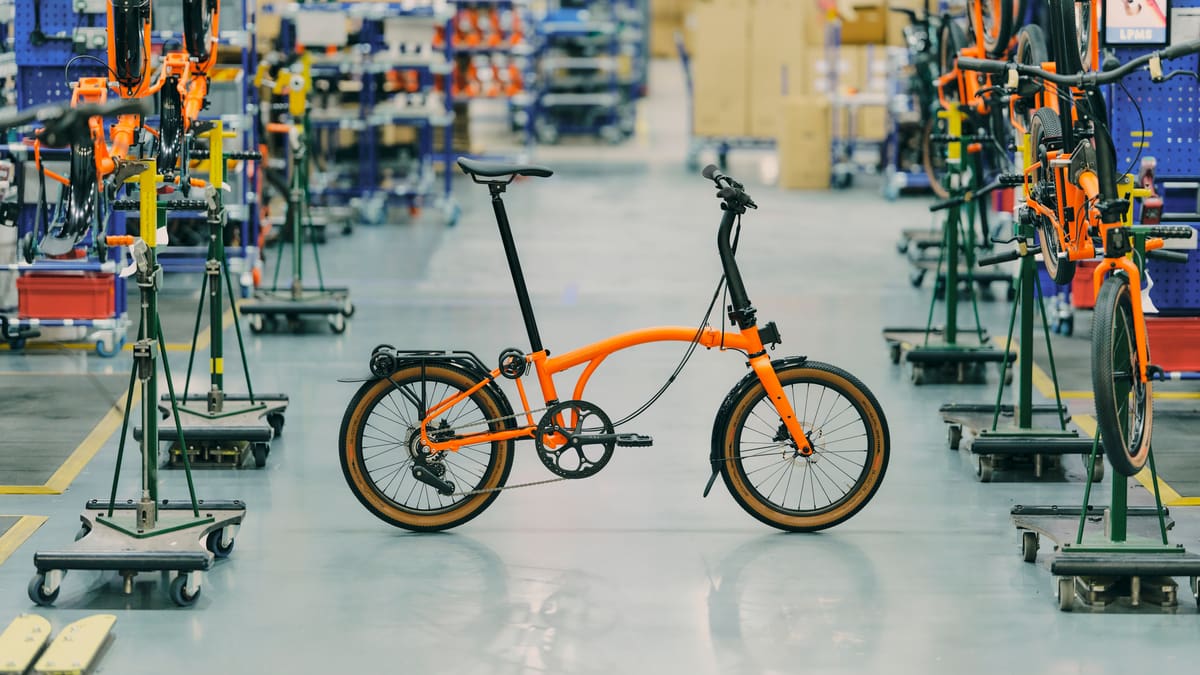
Unlike Tern bikes, which were designed in Los Angeles to fit in the trunk of a car, a Brompton was originally designed to fold small for the teensy-tiny London Tube while unfolding big to handle all the English potholes. A Brompton isn’t designed for your car, it’s designed to replace it. Of course, if you do put a Brompton in your car, it leaves a lot more room for gear than a Tern ever would.

A Fun Conclusion
All this math, geometry, and obsessive engineering doesn’t just exist for its own sake – it’s in service of something radically practical. A Brompton gives you the stability of a full-size bike, the portability of a carry-on, and the speed and agility to outpace traffic. It folds in seconds, fits under a desk, and dodges every cost and hassle of car ownership. There is no gas, no parking, no theft, and no problem! It’s the best folding bike ever – and, it’s the best city bike ever.

But the best part? It’s really fun. It’s fun on a commute and it’s fun if you’re planning to ride around Europe. A Brompton is fun if you’re living the van-life, own a sailboat, or just want to take the train for a weekend in Montreal. It’s all city bike, but there’s a bonus level too: whether work or vacation, it’s the best travel companion you’ll ever have.
Learn More
Questions about a Brompton? We can help!

